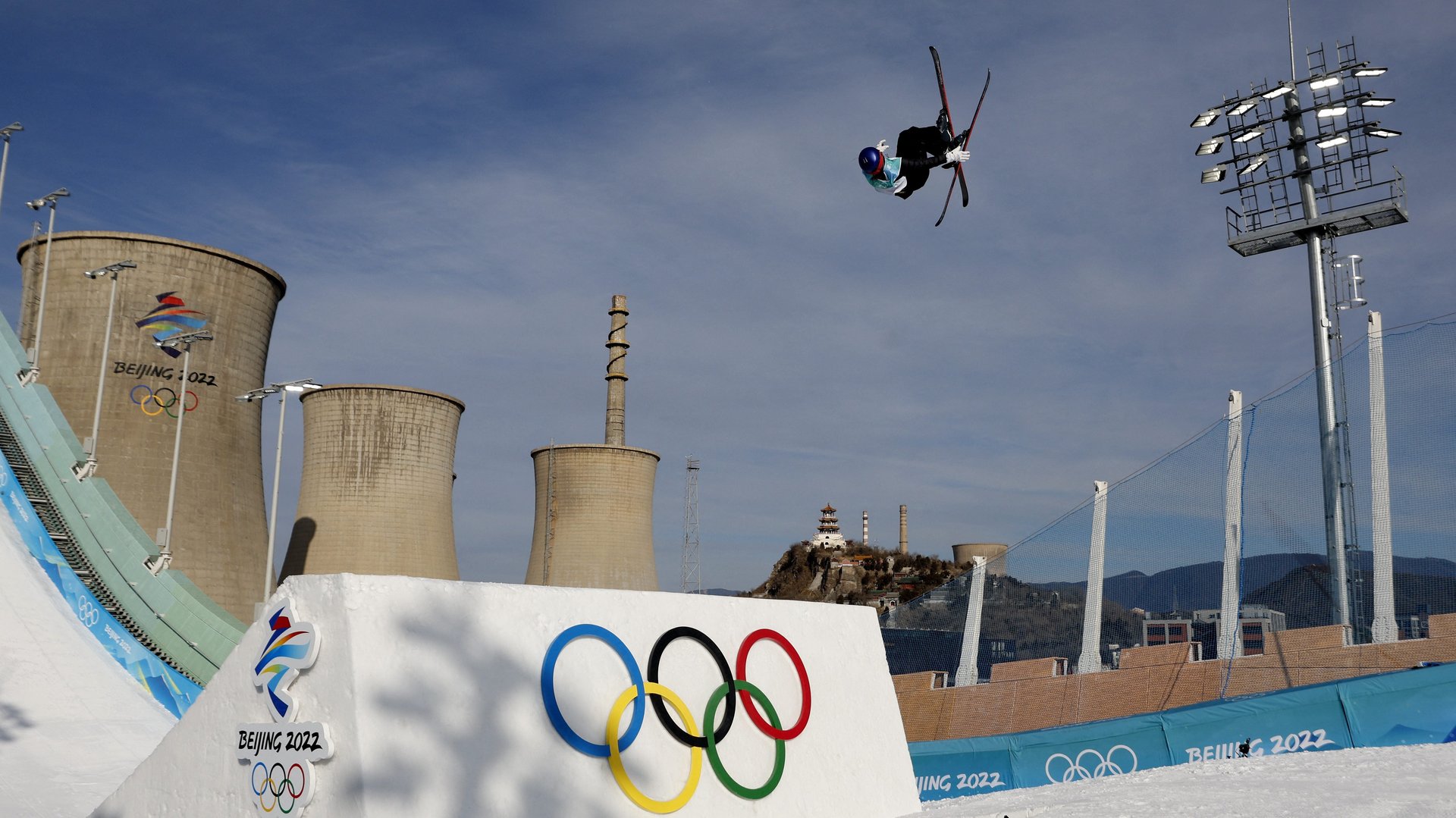Beijing’s Olympic ramps and tracks are built on steel mills and coal workshops
When China’s Eileen Gu won Olympic gold at Big Air Shougang, all eyes were on her. But unlike other Olympics, where athletes are photographed against awe-inspiring, pristine, snow-filled mountains, Gu’s backdrop shows industrial ruins.


When China’s Eileen Gu won Olympic gold at Big Air Shougang, all eyes were on her. But unlike other Olympics, where athletes are photographed against awe-inspiring, pristine, snow-filled mountains, Gu’s backdrop shows industrial ruins.
There’s a century-old reason for the furnaces, chimneys, and cooling towers: The world’s first permanent big air venue, built in dry and urban west Beijing, is a former steel mill.
The 60-meter-high (196 ft) slope was constructed and ready by October 2019—just in time to host the Air+Style World Cup 2019. It boasts an area of 5,500m2, and can accommodate more than 8,000 spectators.
The Big Air slope and the steel mill that was
State-owned steel company Shougang owned and operated the still mill between 1919 and 2005.
As companies moved away from the city to reduce smog ahead of the 2008 Beijing Summer Olympics, Shougang, too, folded operations and shifted to the adjacent Hebei province. However, any building that was structurally sound was not demolished.
Over the years, the area become a sporting, tourism, and fitness hub. It also houses cafes, bookshops, and modern offices—the latter includes the headquarters of the Beijing 2022 Organizing Committee. One of the cooling towers is apparently being turned into a wedding venue.
Athletes like Mathilde Gremaud—the Swiss who won the bronze medal at the venue in women’s freestyle skiing—have described it as “the perfect version of a city big air” but Twitter users have been far less kind, calling it a “post-apocalyptic” venue and even a “hellscape.” Others likened it to something out of a video game.
Sports for all
Two coal workshops, with a total area spanning 25,000m2, have been put to similar use: They host the short-track speed skating, figure skating, curling and ice hockey venues.
After the Olympics, these venues will be open to all.
Shougang Park’s regeneration “is an impressive example, showing how with creativity, drive and innovation we can transform city landscapes into more livable, citizen-friendly and greener spaces,” said Marie Sallois, the International Olympics Committee’s director for sustainability. By locating it in the city, away from the mountains, the area “will not only be an icon of urban regeneration but a constant source of joy and inspiration for local communities and visitors.”